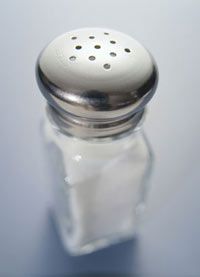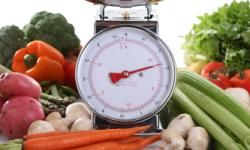The No. 1 reason people choose the foods they eat — over convenience and health — is flavor. One of the easiest and cheapest ways to make food taste good is by adding salt to it. A few salty foods in your diet won't do any harm, but most American diets are laden with sodium.
Here are the cold, hard facts. The body requires only 500 milligrams of sodium each day. The American Heart Association recommends no more than 2,400 milligrams of sodium per day, but most of us take in more than 4,000 milligrams every day.
Advertisement
Excess sodium intake can lead to high blood pressure (hypertension) — but not by itself. Family history, age, smoking, excess weight and a sedentary lifestyle also contribute to the condition. Additionally, some people, particularly African-Americans, are especially prone to hypertension. High blood pressure is defined as a reading of 140 or higher over 90, or higher.
More than 50 million Americans — or one in 4 — have high blood pressure and a third of them don't know it. High blood pressure contributes to the risk of heart and kidney disease and stroke.
Salty Situation
Though it can't prevent high blood pressure, cutting back on salt can help regulate hypertension. But experts suggest that even people who are otherwise healthy should moderate their sodium intake.
You can cut that intake by making wise food choices. A good place to start is by eliminating processed foods, which account for more than 75 percent of the salt we eat. If you eat out a lot, you should know that many restaurant meals contain a day's worth of sodium.
What's more, not all foods that contain sodium have a salty taste. That's why it pays to read labels. Look for food products that say "low sodium" on the package. They have 140 milligrams of sodium or less per serving. Products marked "very low sodium" have no more than 35 milligrams. Some products say "no added salt," but they may have natural sodium, so check the label.
Stay Balanced
Try to eat more fresh fruits and vegetables — make your goal between five and nine servings a day. A low-fat diet rich in fruits and vegetables has been shown to lower blood pressure significantly. The DASH (Dietary Approaches to Stop Hypertension) eating plan was developed by the National Heart, Lung and Blood Institute — an arm of the National Institutes of Health. In addition to limiting sodium, the DASH diet is rich in fruits and vegetables, and includes low-fat dairy products.
Limit your intake of these foods:
- All prepared foods (such as pizza, Chinese food and Mexican food)
- Packaged foods
- Potato and corn chips
- Pretzels
- Popcorn
- Canned soups and vegetables
- Frozen meals
- Cured and smoked meats
- Bacon ham and sausage
- Smoked fish
- Natural and processed cheeses
Hold the Salt Shaker
Aside from not adding additional salt to your food (remember, taste your food before you reach for the shaker!), there are plenty of other ways to reduce the amount of sodium in your diet:
- Use citrus juice, like lemon and lime, to brighten up the flavor of food.
- Add fresh herbs like cilantro, basil, thyme and rosemary to your foods for a savory punch without added salt.
- Try salt-free seasoning blends to add a kick to soups, casseroles and other dishes.
- Use onions and garlic to add dimension and flavor to sautes, stir-fries and sauces.
Advertisement



